Understanding Vodka's Exceptional Shelf Life
Does vodka expire? Not in the way food does. Vodka's high alcohol content keeps it safe to drink, though flavor and aroma can slowly change with time and storage.
Quick Answer:
- Unopened vodka: Indefinite shelf life when stored properly
- Opened unflavored vodka: 10-20 years before noticeable quality decline
- Opened flavored vodka: 3-6 months for optimal taste
- Safety: High alcohol content prevents harmful bacteria growth
Vodka (minimum 40% ABV) is naturally inhospitable to bacteria and mold. Still, air, light, and heat can gradually dull its character.
As Sylwester Skóra, founder of Two Flags One Spirit, I’ve learned that while vodka doesn’t truly expire, smart storage ensures every pour tastes the way it should.
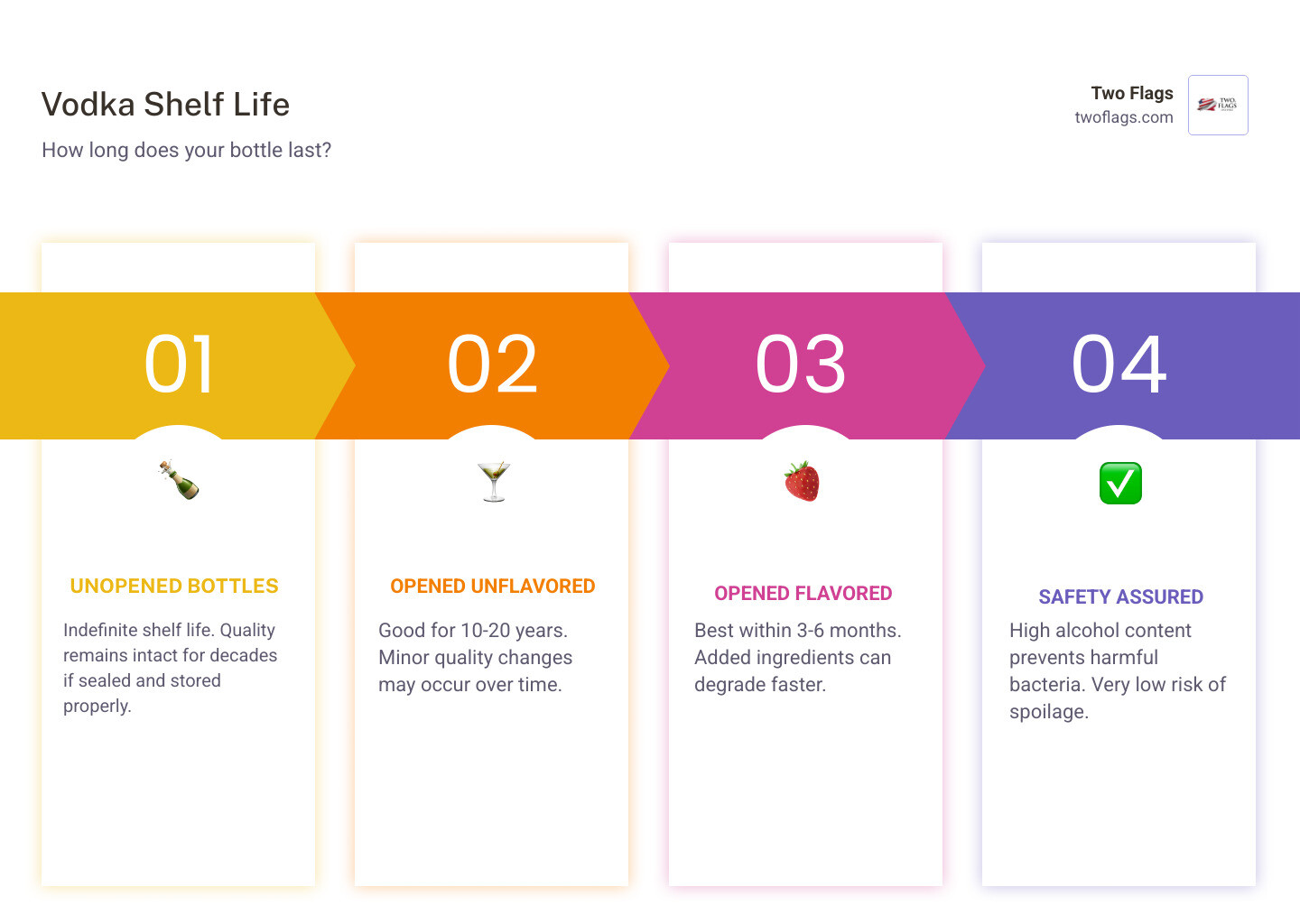
Does vodka expire terms to know:
The Science Behind Vodka's Longevity
Instead of asking "does vodka expire," it's more accurate to ask how its quality changes over time. The answer starts with understanding the fundamental nature of vodka and how it's made.
Through high-proof distillation, vodka becomes a neutral spirit—mostly ethanol and water. This process removes most congeners (flavor compounds from fermentation), creating a remarkably pure spirit. Fewer congeners mean greater stability over time. Two Flags One Spirit is carefully distilled multiple times for exceptional purity, which directly supports its impressive long-term shelf life.
At 40% ABV and higher, alcohol acts like a natural preservative. Above roughly 25% ABV, the environment becomes inhospitable to bacteria and mold, helping the spirit remain safe indefinitely. This high alcohol concentration creates an environment where microorganisms simply cannot survive or reproduce, making contamination virtually impossible under normal storage conditions.
Vodka's chemical simplicity matters significantly. Ethanol is inherently stable, unlike the complex organic compounds found in many other beverages that can break down over time. This stability is why vodka maintains its character far longer than spirits with added sugars, botanicals, or other flavor compounds.
How Vodka's Composition Prevents Spoilage
Alcohol serves as a built-in antimicrobial agent, so properly stored vodka doesn't support harmful microbial growth. The ethanol molecules actively disrupt bacterial cell membranes and denature proteins, making survival impossible for potential contaminants. This contrasts sharply with lower-alcohol drinks like wine and beer, which contain sugars and organic compounds that can spoil after opening.
Distilled spirits undergo purification that removes biological components during distillation. The distillation process heats the fermented liquid until alcohol vaporizes, then condenses it back into liquid form, leaving behind most impurities. That's why, when stored well, vodka can remain safe and consistent for years while other drinks change much more quickly. The purity achieved through distillation is what gives vodka its remarkable stability and longevity.
Unopened vs. Opened Vodka: A Tale of Two Timelines
Picture two bottles of Two Flags One Spirit: one sealed, one opened. The difference comes down to oxygen exposure and time.
Once the factory seal is broken, oxidation begins—subtle, slow, and not dangerous, but capable of softening aromas and flavors over years.
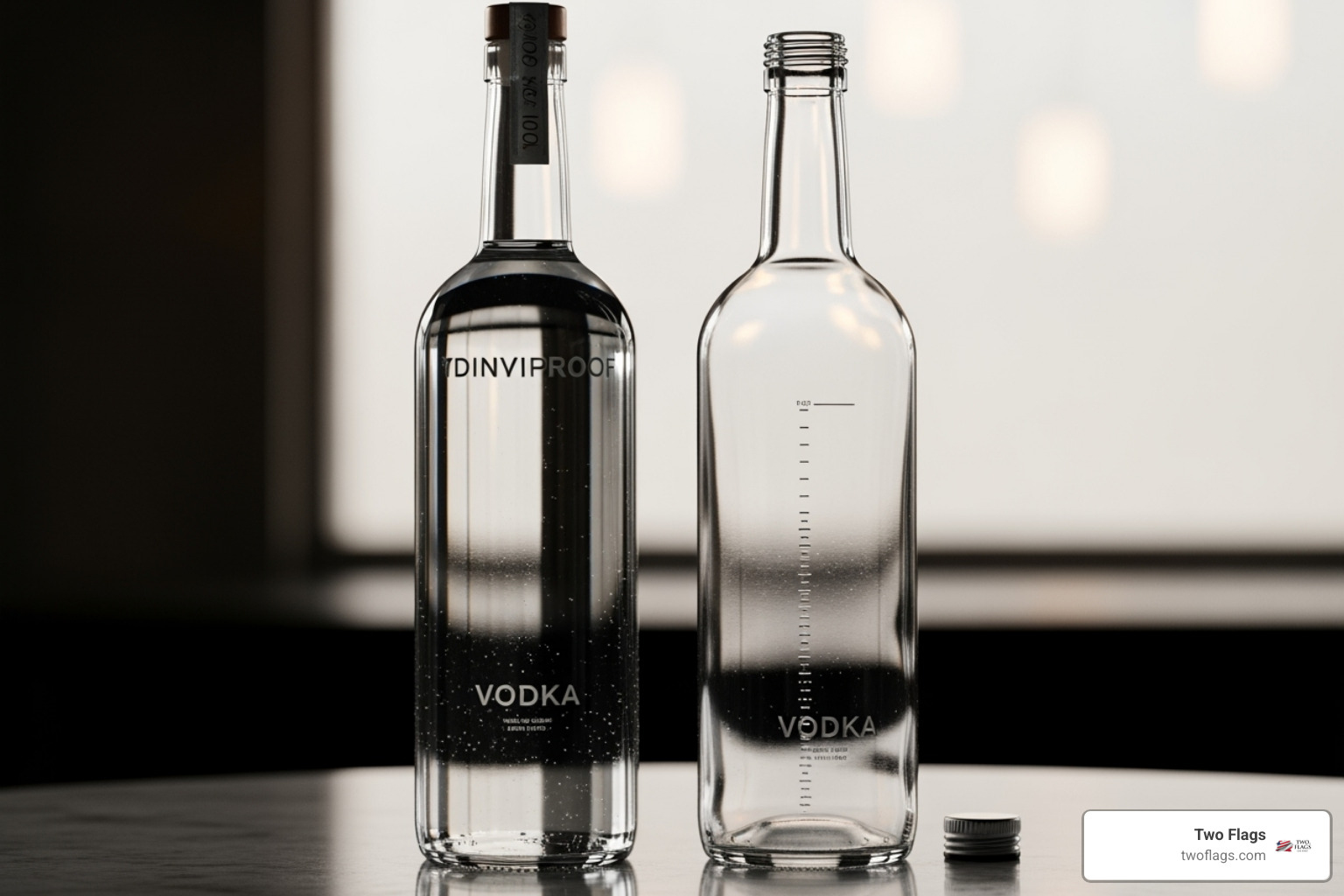
Does vodka expire if it's unopened?
Not in any meaningful way. A sealed bottle can sit for decades and taste as intended, provided it’s stored in a cool, dark place. The intact seal prevents evaporation and air exchange, preserving quality whether the closure is a cork or screw cap.
Does vodka expire after being opened?
Quality slowly shifts after opening. Unflavored vodka generally keeps its character for 10–20 years. Expect a gradual softening of aroma and a slightly muted profile over time. Bottles with more headspace (air) may change faster than fuller ones.
So, Does Vodka Expire? Factors That Affect Quality
Vodka doesn't spoil in a way that becomes unsafe, but its quality can fade over extended periods. Your bottle remains drinkable indefinitely from a safety perspective; it may simply be less vibrant and nuanced than it once was. Understanding the factors that influence this gradual change helps you maximize your vodka's lifespan.
As Wesly Moore, shop manager at Bar Keeper, notes, "time, light, heat, and oxygen" are the main concerns when storing spirits. Each of these factors works differently to affect your vodka's character, and understanding them helps you create optimal storage conditions.
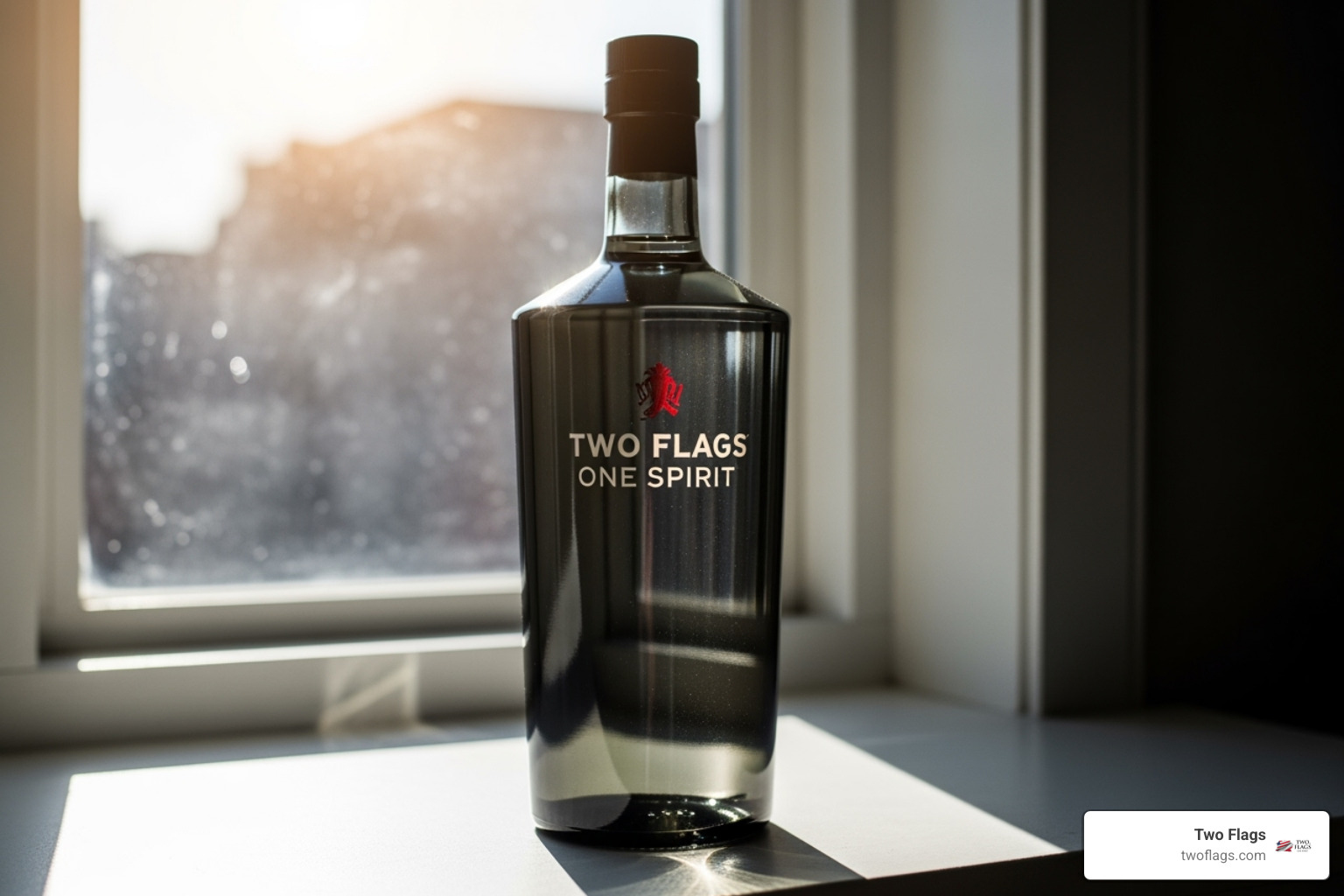
The Impact of Storage: Light, Heat, and Air
Light: UV radiation can trigger photochemical reactions that create off-flavors and alter the vodka's molecular structure. Even indirect sunlight can cause gradual degradation. Keep bottles away from windows, bright light fixtures, and any source of UV exposure. Dark storage areas or opaque containers provide the best protection.
Heat: High or fluctuating temperatures speed evaporation (ethanol evaporates faster than water) and can accelerate chemical reactions that nudge flavor changes. Temperature swings cause expansion and contraction that can compromise seal integrity. Consistent, moderate temperatures preserve quality best.
Oxygen: After opening, oxidation slowly mutes aroma and taste through chemical reactions between oxygen and ethanol molecules. More headspace in the bottle means faster change, as increased air contact accelerates oxidation. Consider transferring vodka to smaller bottles as you consume it to minimize air exposure.
Unflavored vs. Flavored Vodka Shelf Life
Unflavored vodka: Highly stable due to its simple composition—typically maintains quality for 10-20 years after opening when stored well. The absence of added compounds means fewer opportunities for degradation.
Flavored vodka: Added sugars, natural extracts, and flavorings degrade faster through oxidation and chemical breakdown; best consumed within 3-6 months of opening for peak taste. These additions create more complex chemistry that's susceptible to change over time.
How to Tell if Your Vodka Has Gone Bad
Old vodka is almost never dangerous, but it can lose appeal. Use your senses: look, smell, and—if it seems fine—taste a small sip.
Signs of Degraded Vodka
- Appearance: Crystal-clear is ideal. Cloudiness, color changes, or sediment indicate it’s past its best.
- Smell: Should be clean and neutral. Sour, musty, or chemical notes are warning signs.
- Taste: Flat, watery, bitter, or odd flavors mean quality has declined.
Can Drinking "Expired" Vodka Make You Sick?
At around 40% ABV, vodka isn’t a friendly place for bacteria or mold, so foodborne illness is unlikely. Any risk typically comes from outside contamination during handling. This guidance applies to pure distilled spirits like Two Flags One Spirit; cream-based liqueurs are a separate case.
Best Practices for Vodka Storage
You don't need special equipment or a professional cellar—just a calm, protected spot with consistent conditions. Good storage preserves the clean character and smooth finish that Two Flags One Spirit is known for. Following these guidelines ensures every pour delivers the quality you expect.
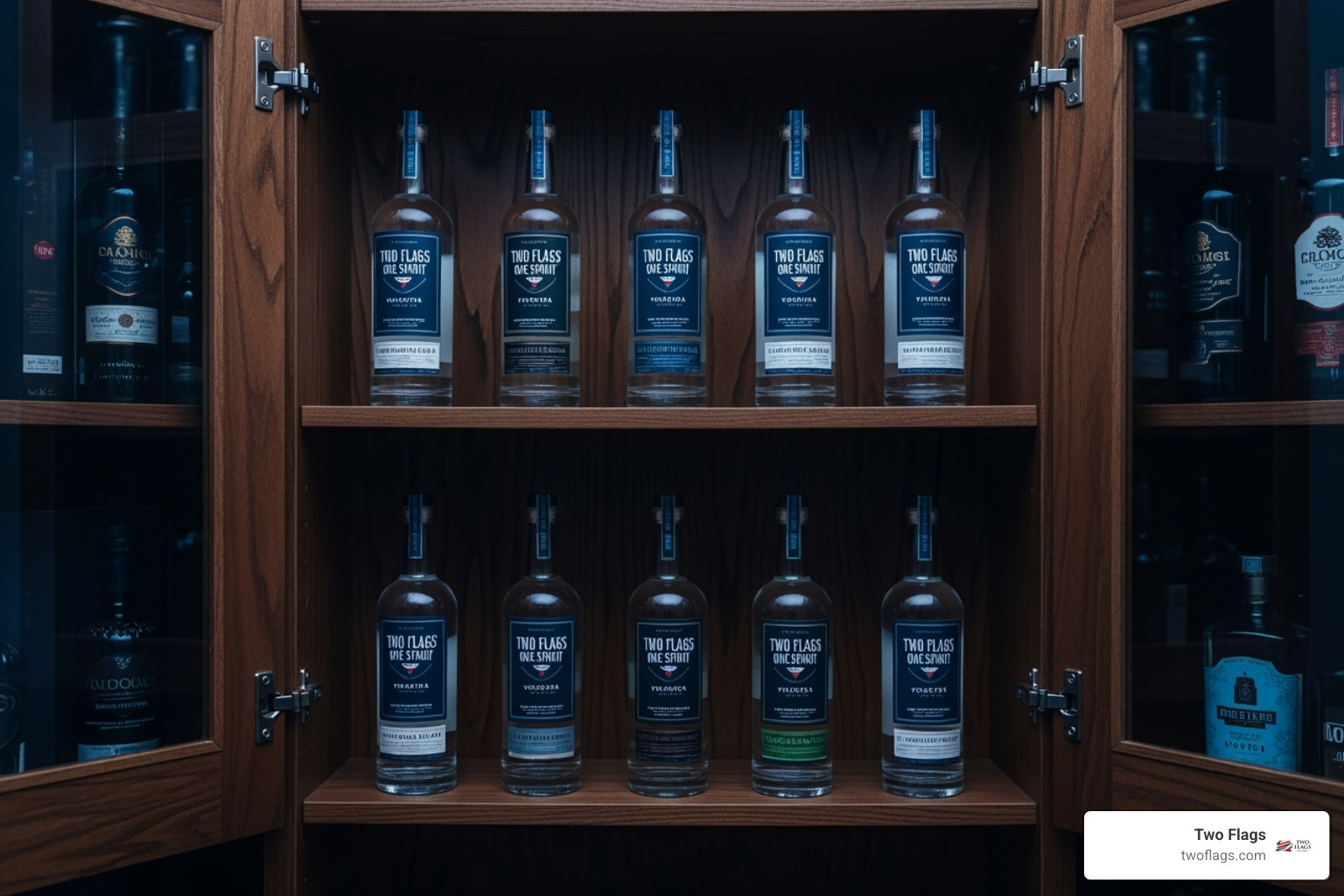
The Ideal Storage Environment
Cool, dark place: A pantry, cabinet, or closet away from sunlight provides ideal conditions. Basements often work well if they're not too humid. Avoid areas near heat sources like radiators, stoves, or heating vents.
Stable temperature: Around 50-70°F (10-21°C) works well for long-term storage. Consistency matters more than the exact temperature—avoid locations with daily temperature swings like garages or attics.
Upright bottles: Store bottles standing up to prevent cork damage and limit the liquid's surface area exposed to air. This position also prevents leakage and makes it easier to spot any seal issues.
Tight seal: Close the cap firmly after each pour to reduce oxidation and evaporation. Check periodically that caps haven't loosened, especially if bottles are moved frequently. Consider using vacuum sealers for bottles you plan to keep for extended periods.
To Freeze or Not to Freeze?
Freezing won't harm vodka chemically, but very cold temperatures can mute the subtle nuances that distinguish premium spirits. The cold numbs taste receptors and reduces aromatic volatility, masking the careful craftsmanship in each bottle. For premium spirits like Two Flags One Spirit, chilling rather than freezing allows you to appreciate the full flavor profile.
The sweet spot for serving is 32-41°F (0-5°C)—cold enough to be refreshing but warm enough to express character. If frozen, let the vodka warm slightly before pouring to reveal more aroma and flavor. Some enthusiasts keep their everyday vodka in the freezer while storing premium bottles at cellar temperature, chilling individual servings as needed.
Frequently Asked Questions about Vodka's Shelf Life
Common questions about "does vodka expire" often focus on comparisons, uses, and storage containers. Here are concise answers.
How does vodka's shelf life compare to other spirits?
Vodka’s simplicity—ethanol and water—gives it an edge in stability. Two Flags One Spirit maintains quality for years after opening, while more complex, sweetened products tend to shift sooner.
| Spirit Type | Two Flags One Spirit (Vodka) | Liqueurs (general range) |
|---|---|---|
| Unopened Shelf Life | Indefinite | Indefinite |
| Opened Shelf Life (Optimal Quality) | 10-20 years | 6 months - 1 year |
Can I use old vodka for anything else?
- Cleaning: Great for glass and mirrors (mixed with water).
- Jewelry: Brief soak, gentle scrub, rinse.
- Vanilla extract: Add vanilla beans; let steep for months.
- Flowers: A few drops with a teaspoon of sugar can extend vase life.
Does the bottle material matter for storage?
- Glass: Best for long-term storage; non-reactive and airtight when sealed well.
- Plastic: Can permit oxygen ingress and leach trace compounds over time.
- Tinted glass: Adds light protection; Two Flags One Spirit’s clear glass showcases its clarity—store it out of direct light.
Conclusion: Enjoying Your Vodka at Its Best
So, does vodka expire? It stays safe, but quality can slowly fade. Protect your bottle by storing it cool, dark, upright, and tightly sealed.
Unflavored Two Flags One Spirit remains excellent for 10–20 years after opening; flavored versions are best within 3–6 months. Handle your bottle with care and you’ll enjoy the crisp, clean experience we crafted in Poland for years to come.


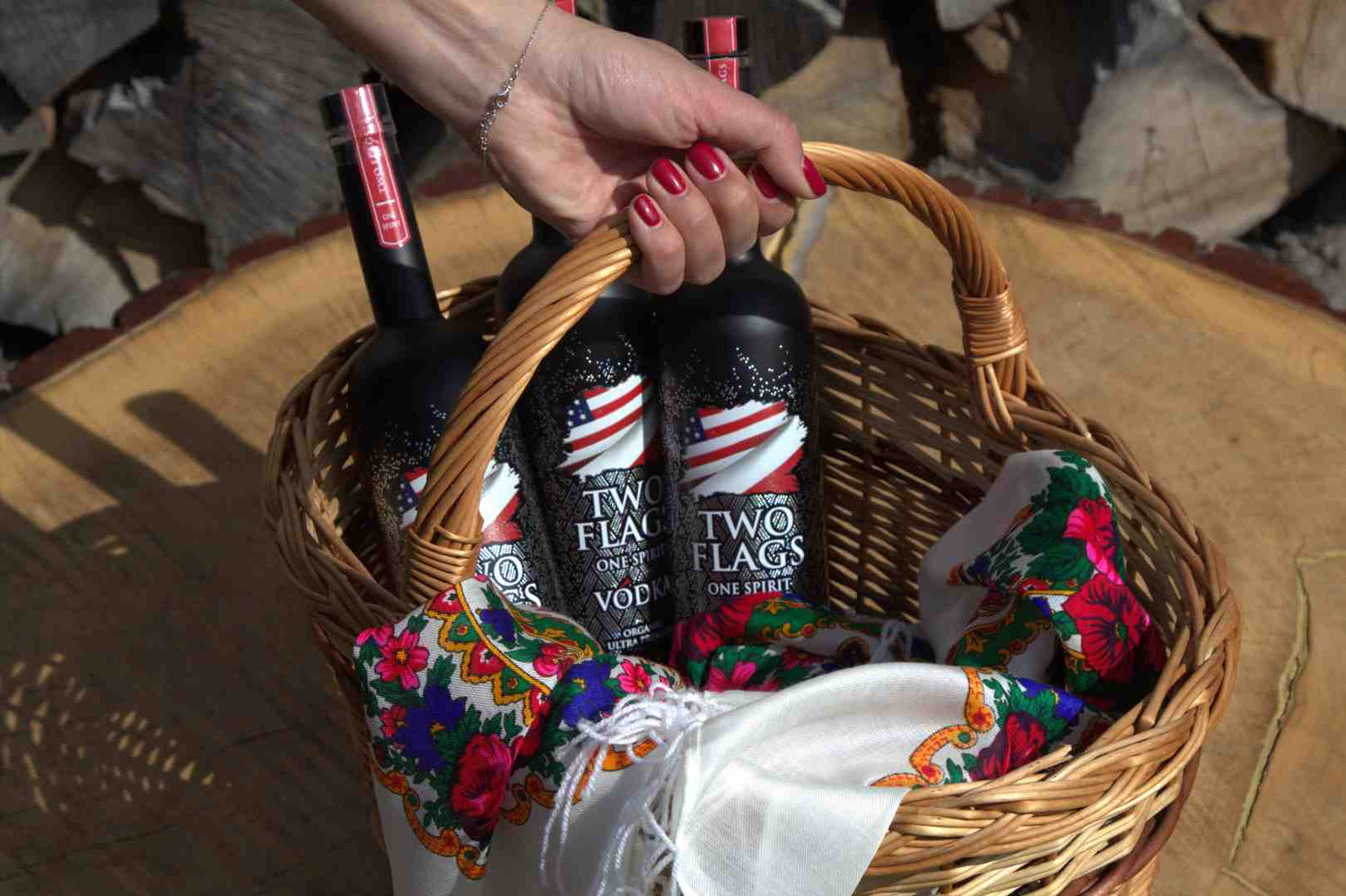
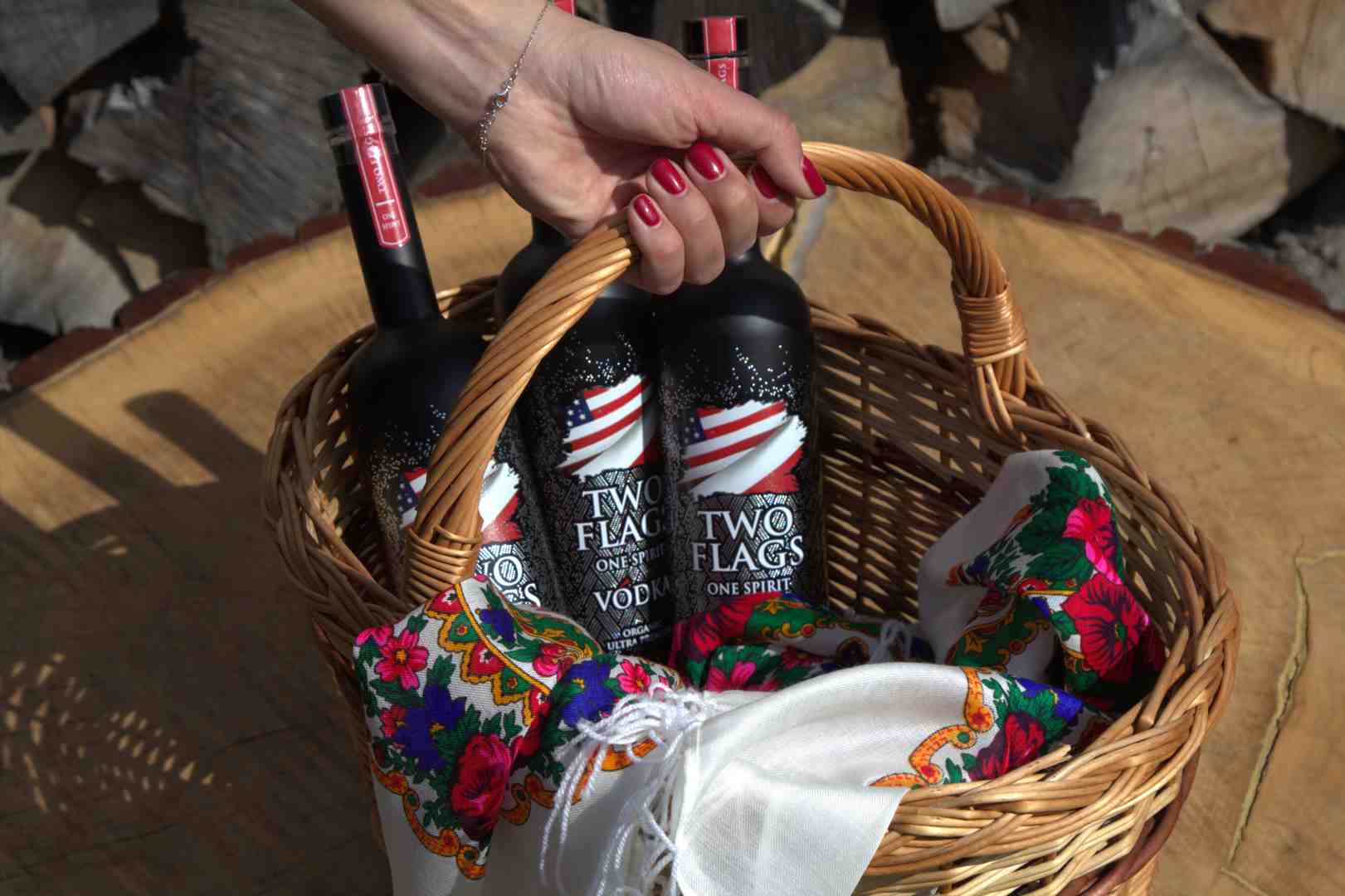
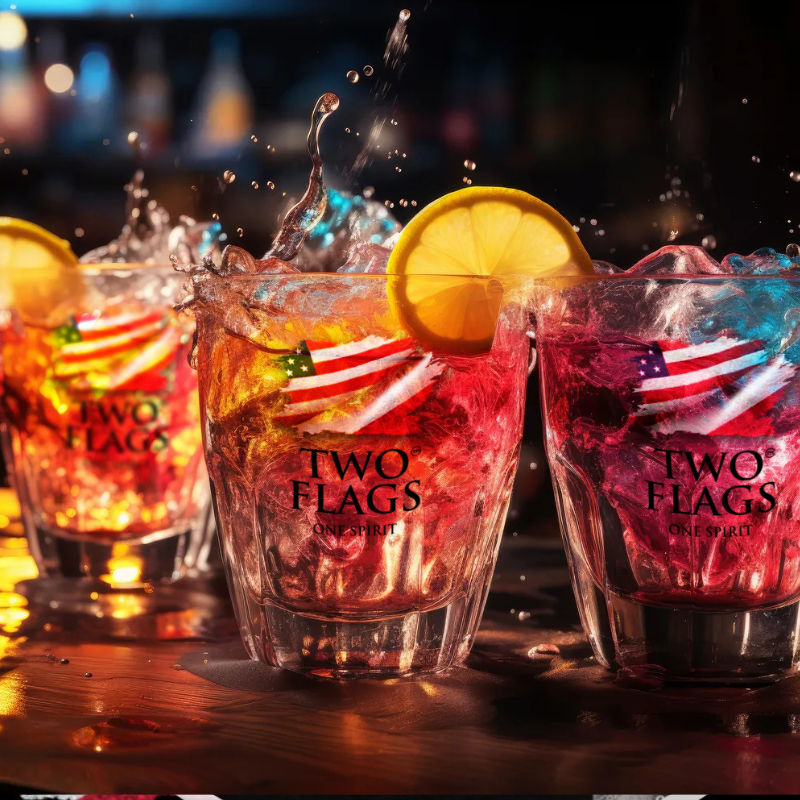
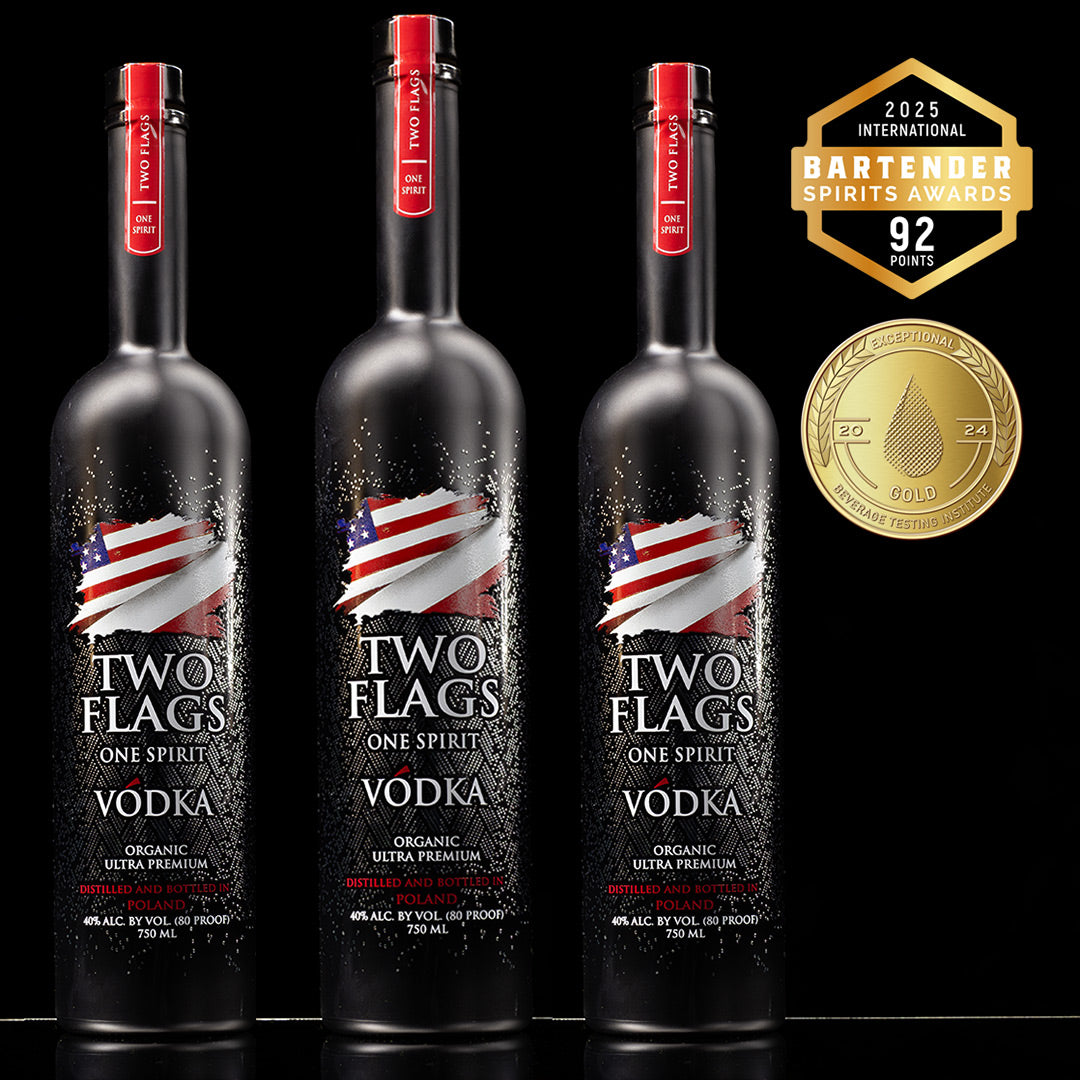
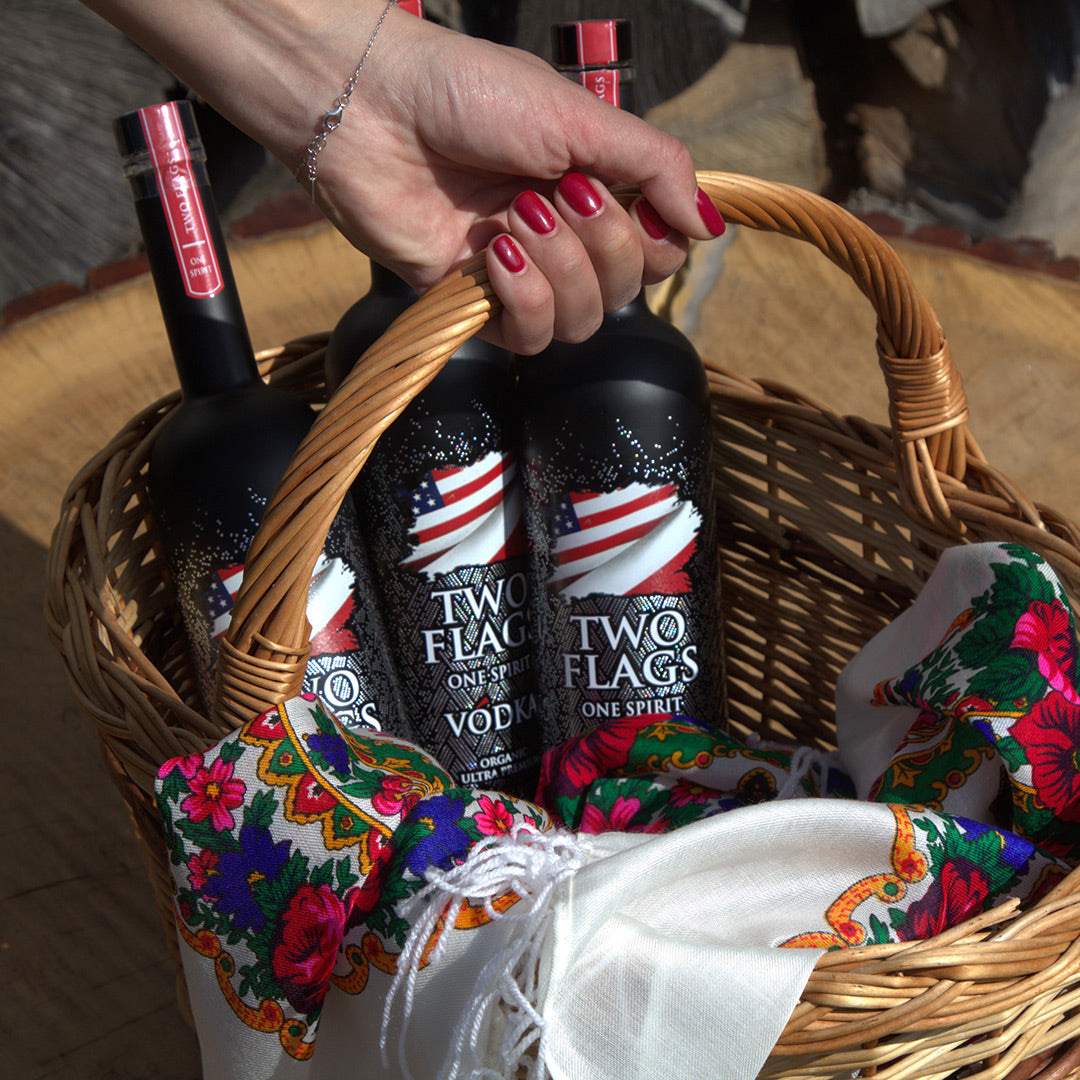
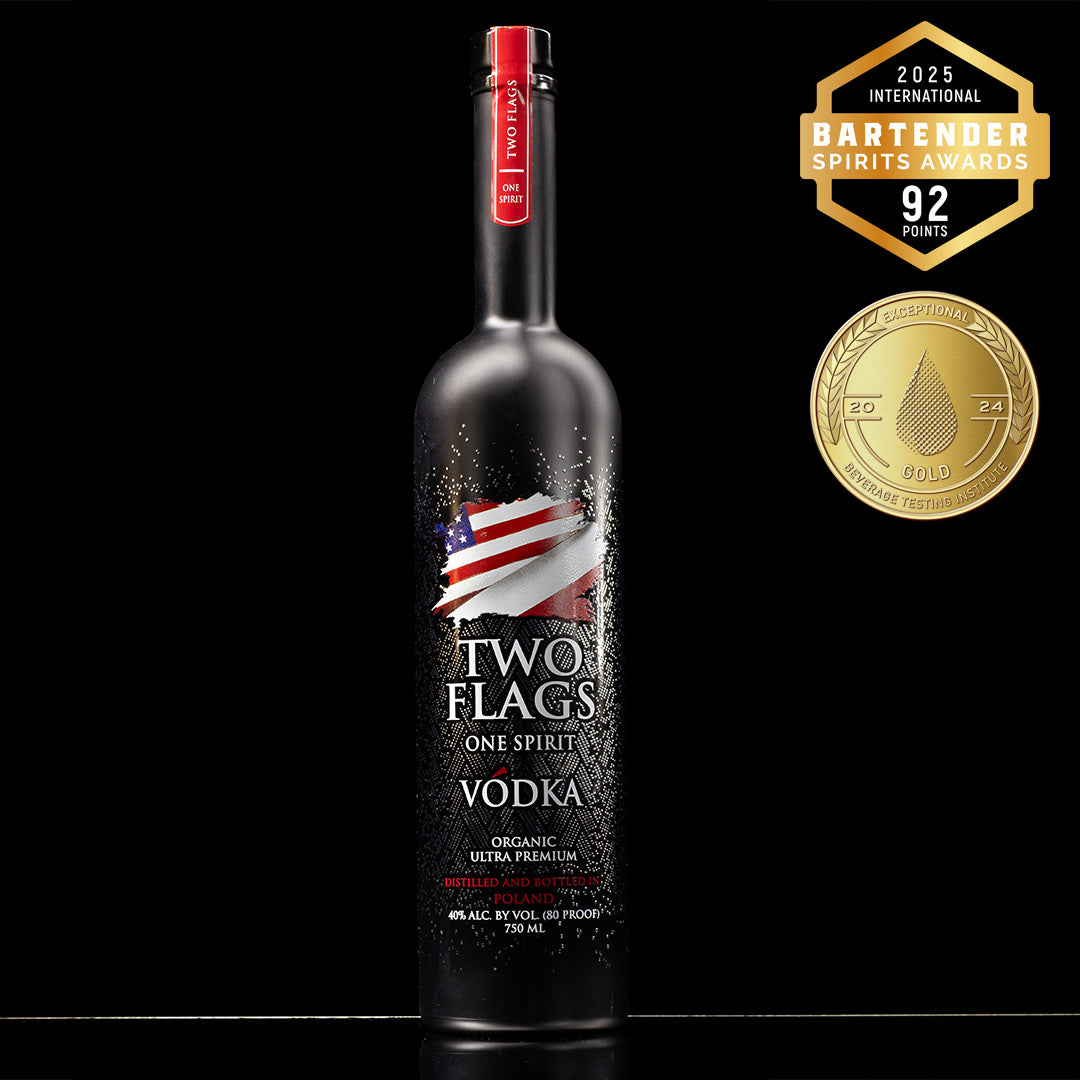
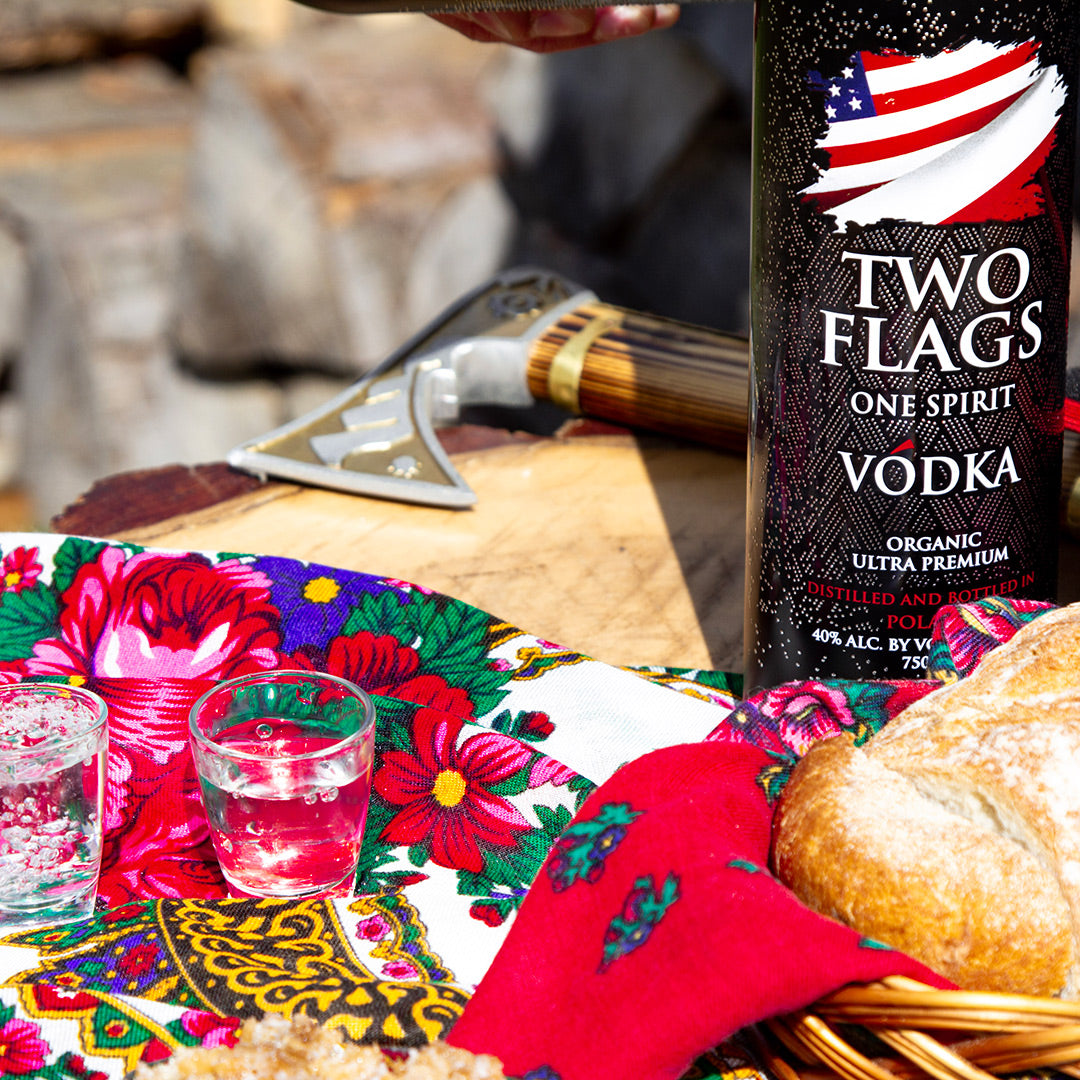
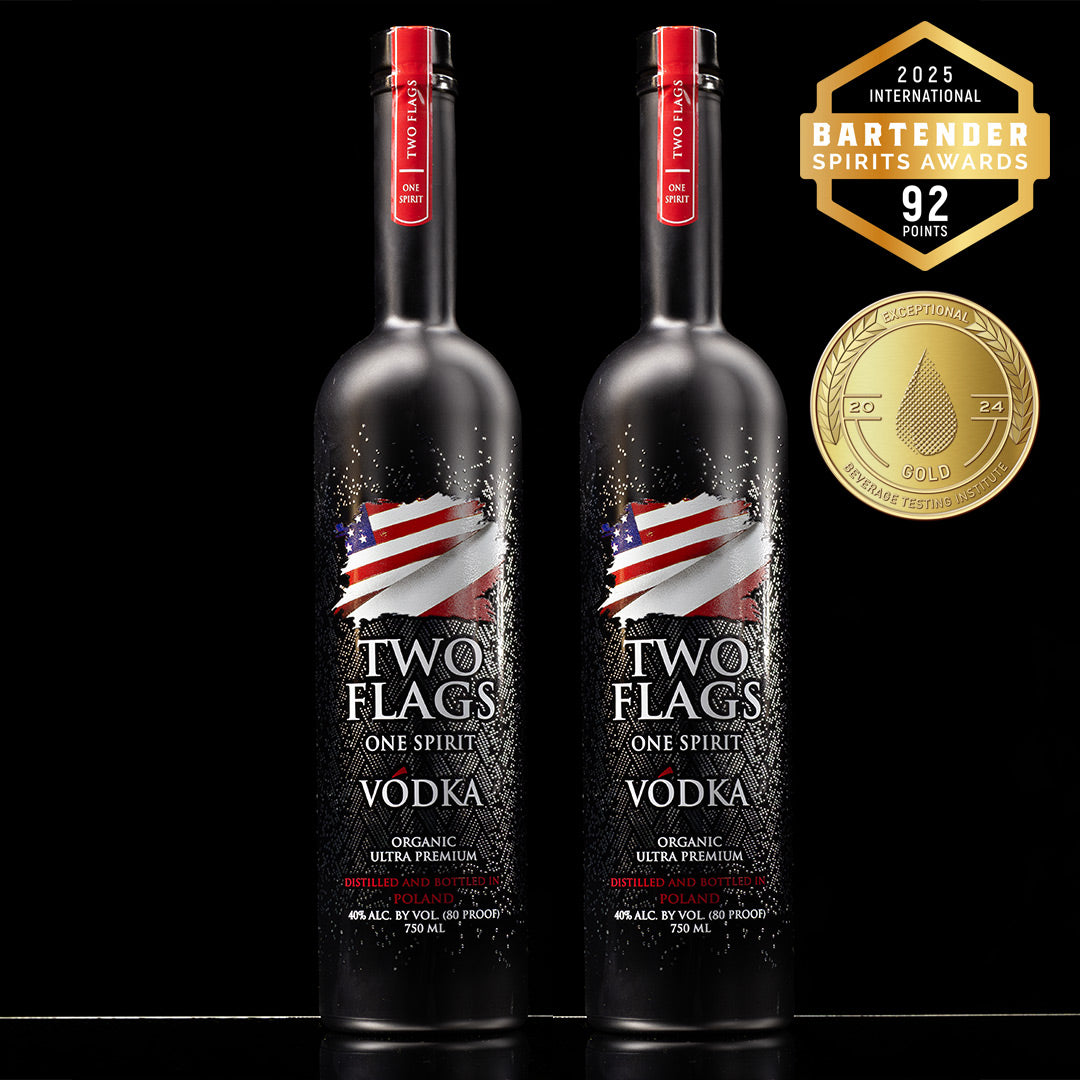
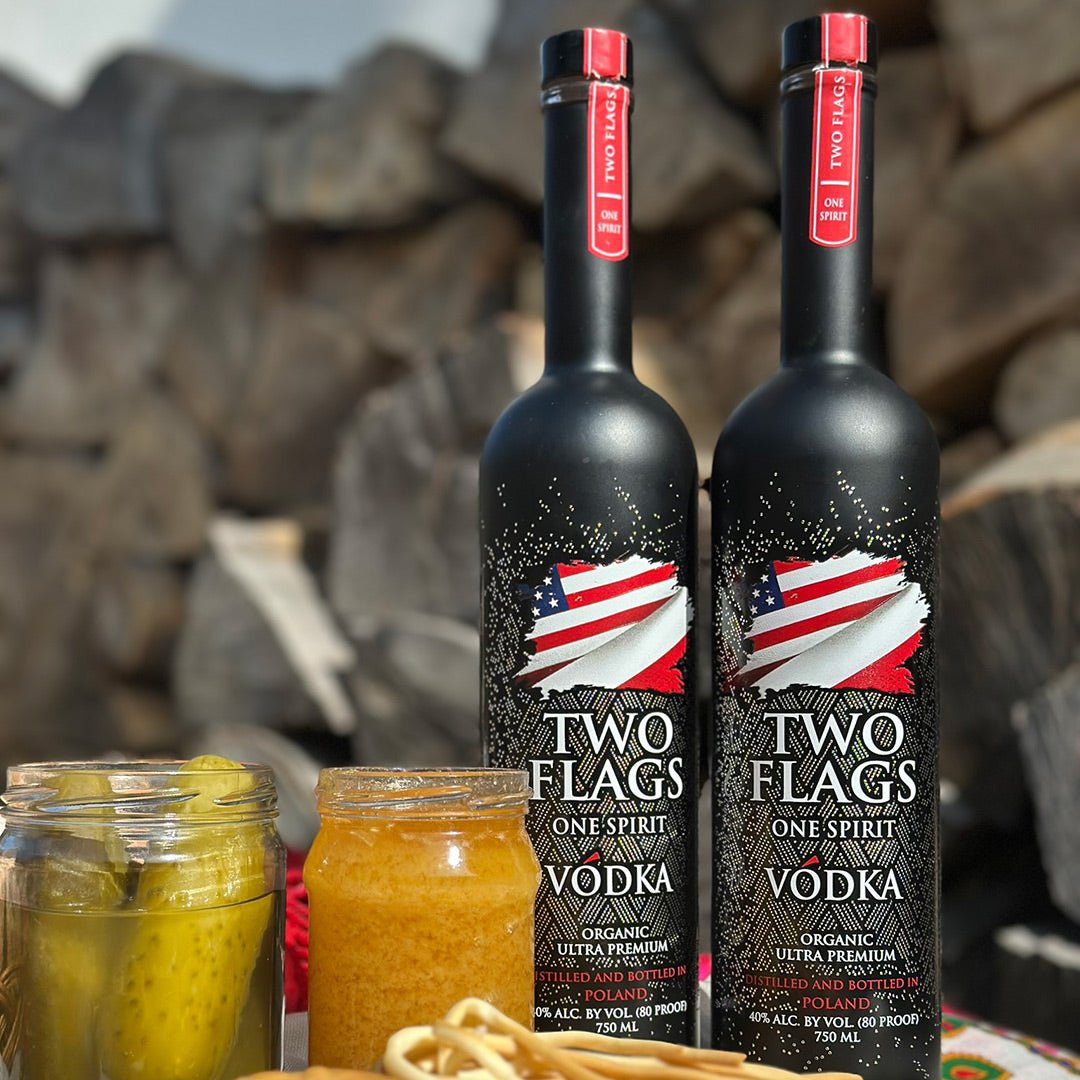
Zostaw komentarz
Ta strona jest chroniona przez hCaptcha i obowiązują na niej Polityka prywatności i Warunki korzystania z usługi serwisu hCaptcha.